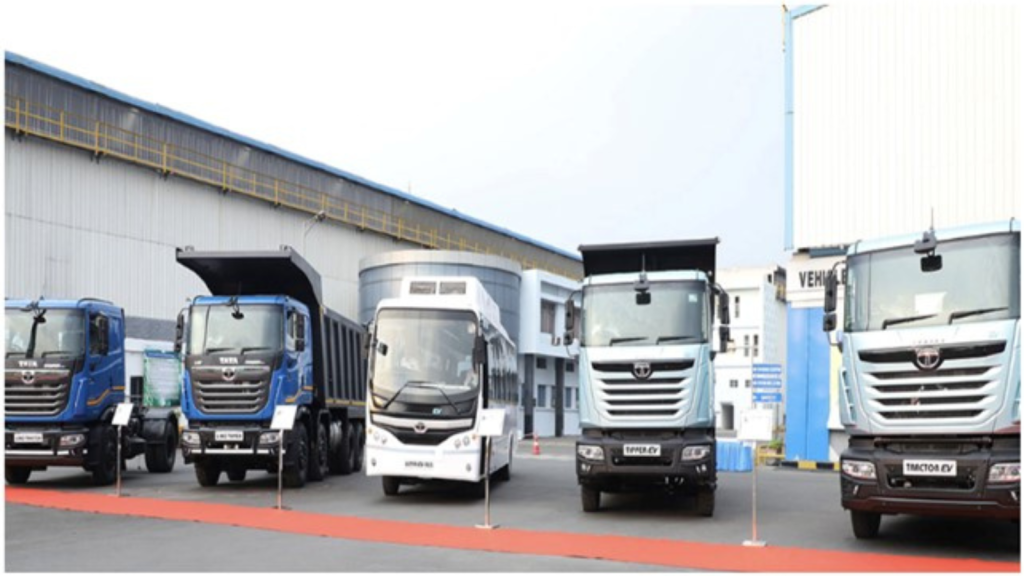The commercial trucking industry is undergoing a transformative shift as businesses and governments worldwide push for greener alternatives to diesel-powered vehicles. Two leading technologies—electric and hydrogen-powered trucks—are emerging as frontrunners in the race to decarbonize freight transportation. While both offer significant environmental benefits, they differ in terms of technology, infrastructure, and operational feasibility. This article explores the pros, cons, and key differences between electric and hydrogen commercial trucks, with a focus on their applicability in the trucking industry.
Electric Commercial Trucks
Pros:
- Zero Emissions: Electric trucks produce no tailpipe emissions, making them ideal for reducing urban air pollution.
- Lower Operating Costs: Electricity is generally cheaper than diesel or hydrogen, leading to lower fuel costs over the vehicle’s lifetime.
- Proven Technology: Electric vehicles (EVs) have been widely adopted in passenger cars, and the technology is now being scaled up for commercial trucks.
- Quieter Operations: Electric trucks are significantly quieter than diesel trucks, reducing noise pollution in urban areas.
- Government Incentives: Many governments offer subsidies and tax benefits for electric vehicle adoption, making them more affordable.
Cons:
- Limited Range: Most electric trucks have a range of 150-300 miles on a single charge, which may not be sufficient for long-haul operations.
- Charging Time: Charging an electric truck can take several hours, leading to downtime for fleets.
- Battery Weight: The heavy weight of batteries can reduce the payload capacity of electric trucks.
- Charging Infrastructure: While growing, the charging infrastructure for electric trucks is still underdeveloped in many regions.
Hydrogen Commercial Trucks
Pros:
- Longer Range: Hydrogen trucks can travel up to 400-600 miles on a single tank, making them better suited for long-haul routes.
- Fast Refueling: Refueling a hydrogen truck takes about 10-15 minutes, comparable to diesel trucks.
- Zero Emissions: Like electric trucks, hydrogen trucks emit only water vapor, making them environmentally friendly.
- Lightweight: Hydrogen fuel cells are lighter than batteries, allowing for greater payload capacity.
Cons:
- High Costs: Hydrogen fuel is currently more expensive than electricity or diesel, and the trucks themselves are costly to produce.
- Limited Infrastructure: Hydrogen refueling stations are scarce, limiting the operational feasibility of hydrogen trucks.
- Energy-Intensive Production: Most hydrogen is produced using fossil fuels, which undermines its environmental benefits unless green hydrogen (produced using renewable energy) is used.
- Storage Challenges: Hydrogen is highly flammable and requires specialized storage and handling.

Key Differences Between Electric and Hydrogen Trucks
- Energy Source: Electric trucks rely on batteries charged with electricity, while hydrogen trucks use fuel cells that convert hydrogen into electricity.
- Range and Refueling: Hydrogen trucks offer longer ranges and faster refueling times, making them more suitable for long-haul operations. Electric trucks, on the other hand, are better suited for short- to medium-haul routes.
- Infrastructure: Electric charging infrastructure is more widespread than hydrogen refueling stations, but both are still in the early stages of development for commercial trucks.
- Cost: Electric trucks are generally cheaper to operate and maintain, while hydrogen trucks have higher upfront and operational costs.
Statistics on Commercial Trucks (2024-2025)
- Electric Trucks: The global electric truck market is projected to grow at a CAGR of 35% from 2024 to 2025, with sales expected to reach 200,000 units by 2025.
- Hydrogen Trucks: The hydrogen truck market is anticipated to grow at a CAGR of 40% during the same period, with sales projected to hit 10,000 units by 2025.
- Market Share: Electric trucks are expected to dominate the short- and medium-haul segments, while hydrogen trucks will gain traction in long-haul and heavy-duty applications.
- Infrastructure: By 2025, the number of electric charging stations for trucks is expected to double, while hydrogen refueling stations will see a 50% increase globally.
Conclusion
As the commercial trucking industry transitions to cleaner technologies, platforms like 91trucks are playing a pivotal role in facilitating this shift. 91Trucks, a leading digital marketplace for commercial vehicles, is helping fleet operators make informed decisions by providing access to a wide range of electric and hydrogen trucks.
Web Stories
Latest Trucks News
Categories
91trucks is a rapidly growing digital platform that offers the latest updates and comprehensive information about the commercial vehicle industry.
